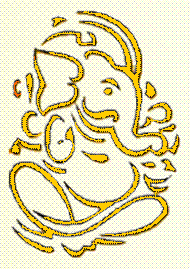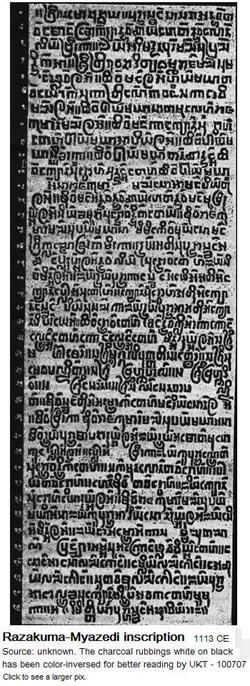

Update: 2012-01-03 03:28 AM +0630
SED-con-r2-indx.htm
from: Online Sanskrit Dictionary , February 12, 2003 . http://sanskritdocuments.org/dict/dictall.pdf 090907
Downloaded, set in HTML, and edited by U Kyaw Tun, M.S. (I.P.S.T., U.S.A.), Daw Khin Wutyi, B.Sc., and staff of TIL Computing and Language Centre, Yangon, Myanmar. Not for sale. No copyright. Free for everyone.
index.htm | Top
SED-con-r2-indx.htm


{wag}-consonants or classifiables
row2 {sa.}-group
- the palatal plosive-stops
![]() {sa.} च /c/ - sa-064b1-2.htm
{sa.} च /c/ - sa-064b1-2.htm
[Neither dental fricative sibilant ष /s/
nor dental fricative thibilant स /θ/]
![]() {sa.Ta.} चट -
sa1Ta1-064b3-2.htm
{sa.Ta.} चट -
sa1Ta1-064b3-2.htm
![]() {sa.ya.} चय
- sa1ya1-065b2.htm
{sa.ya.} चय
- sa1ya1-065b2.htm
[includes
![]() {sar-} ]
{sar-} ]
![]() {si.} चि - si-066b2-2.htm
{si.} चि - si-066b2-2.htm
![]() {su.} चु - su-067b3-2.htm
{su.} चु - su-067b3-2.htm
![]() {hsa.} छ - hsa-068b1-4.htm
{hsa.} छ - hsa-068b1-4.htm
![]() {za.} ज - za1-069top.htm
{za.} ज - za1-069top.htm
![]() {za} जा -
za2-070b4-2.htm
{za} जा -
za2-070b4-2.htm
![]() {zi.} जि - zi1-071b3-2.htm
{zi.} जि - zi1-071b3-2.htm
![]() {zi} जी - zi2-072b1-2.htm
{zi} जी - zi2-072b1-2.htm
![]() {zya.} -
zya-072b4-2.htm
{zya.} -
zya-072b4-2.htm
![]() {z~ña.}-conjunct - zny-conj-220b2-2.htm
{z~ña.}-conjunct - zny-conj-220b2-2.htm
[In the downloaded pdf files this portion
comes only after {ha.}.]
UKT notes :
•
CAVEAT: The members of this group are articulated in the palatal area, and are known as the palatals. Their POA in Bur-Myan and in Pal-Myan is described as the
{ta-lu.za.Htûn}. They are: च ca , छ cha, ज ja, झ jha, ञ ña in Sanskrit and in Hindi. The second member in Hin-Dev (Hindi-Devanagari) and in Skt-Dev, छ cha, has the sound of English affricate /ʧ/ as <ch> in <church>. The corresponding members in Bur-Myan and in Pal-Myan are:
{sa.},
{hsa.},
{za.},
{Za.},
{ña.}. [
{Ña.} is the horizontal conjunct of two
{ña.}.].
You must remember that in both Hin-Skt-Dev and Bur-Pal-Myan akshara matrixes, the modes of articulation of the classifiables aka{wag}-consonants are: tenuis, voiceless (vl), voiced (vd), vd-pharyngeal, and nasal. However, the IPA has only: voiceless, voiced and nasal. The missing two are supposed to be aspirates of the preceding.
As a concrete example, in Eng-Lat, the first members, the tenuis, are pronounced as the second members -- the ordinary voiceless (vl). Thus, r2c1{sa.} is pronounced as r2c2
{hsa.}. The English word <sin> 'grave mistake' is pronounced as
{hsin:} /sʰɪn/ 'to descend' and not as
{sin:} /sɪn/ 'to chop'. My American friends always tell me that the two sounds
{sin:} /sɪn/ and
{hsin:} /sʰɪn/ are the same except that the first is without aspiration, and that the second is aspirated. To the Bur-Myan
{sa.} and
{hsa.} are clearly distinguishable and are not allophones. - UKT 110823
The palatal consonants in the onset of the syllable are usually pronounced by Burmese and English speakers as fricatives. It is even said that there is no palatal /c/ in English. However, it is possible that palatal /c/ can occur in the coda position in words such as <success> /sək'ses/, where /k/ is actually /c/. See my discussion on Antimoon forum - www.antimoon.com/forum/t9999.htm (posted on 080309)
End of TIL file